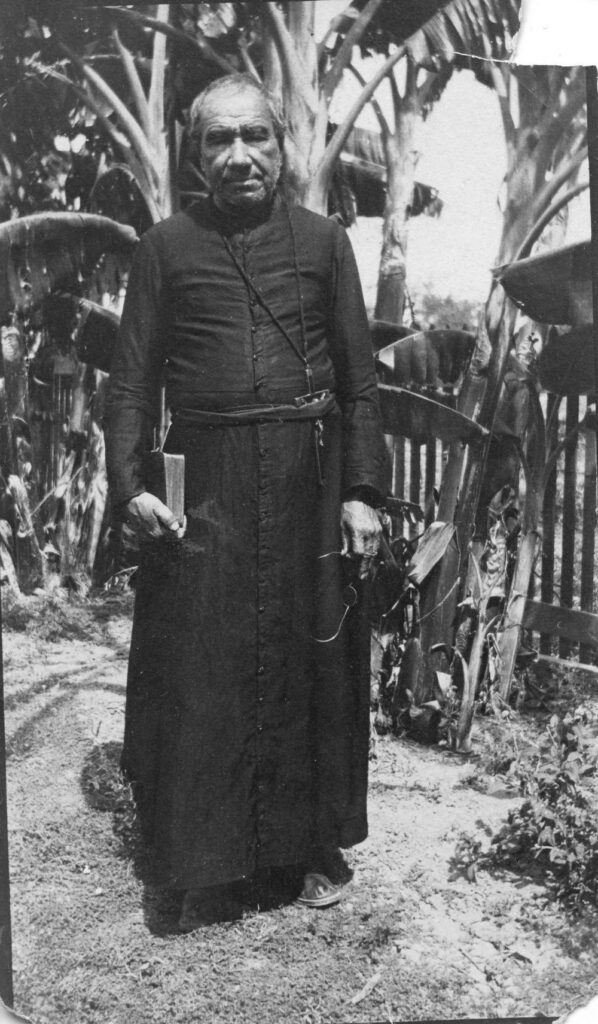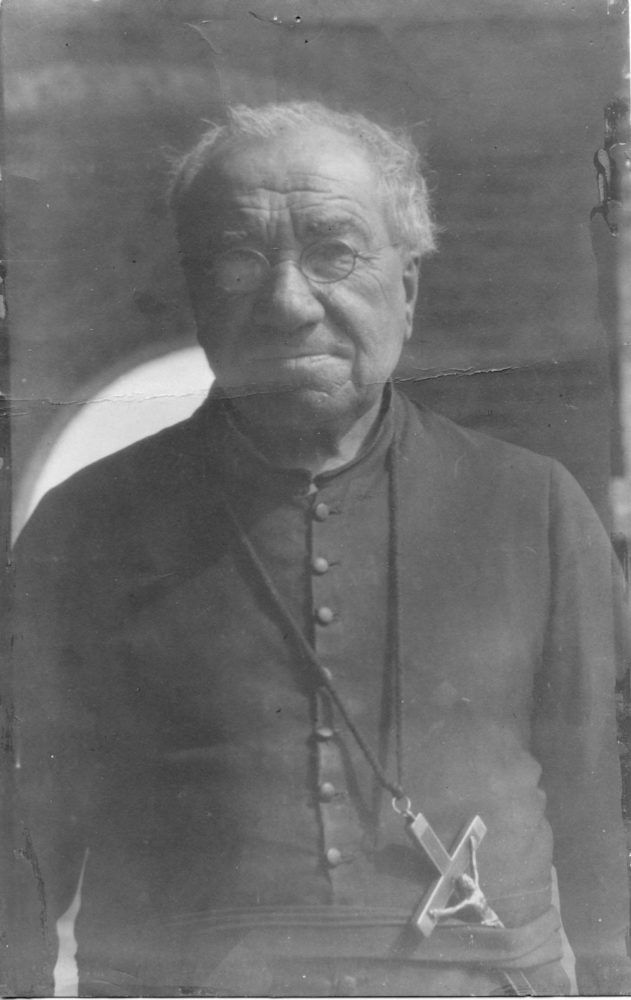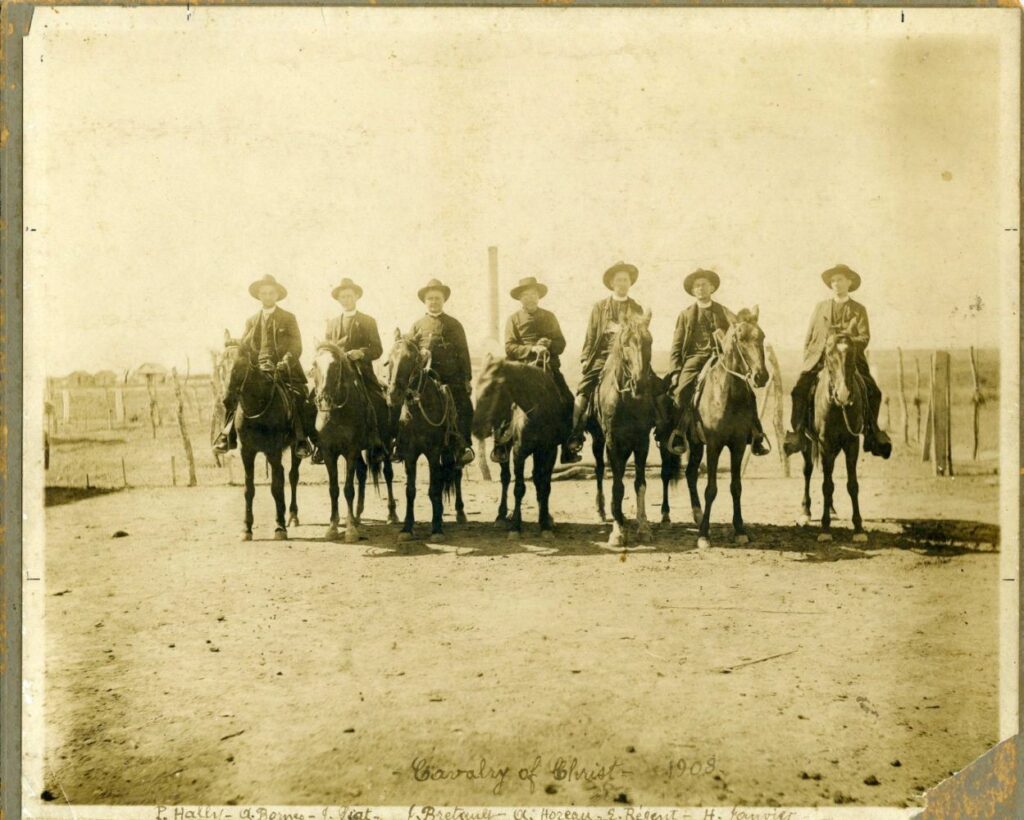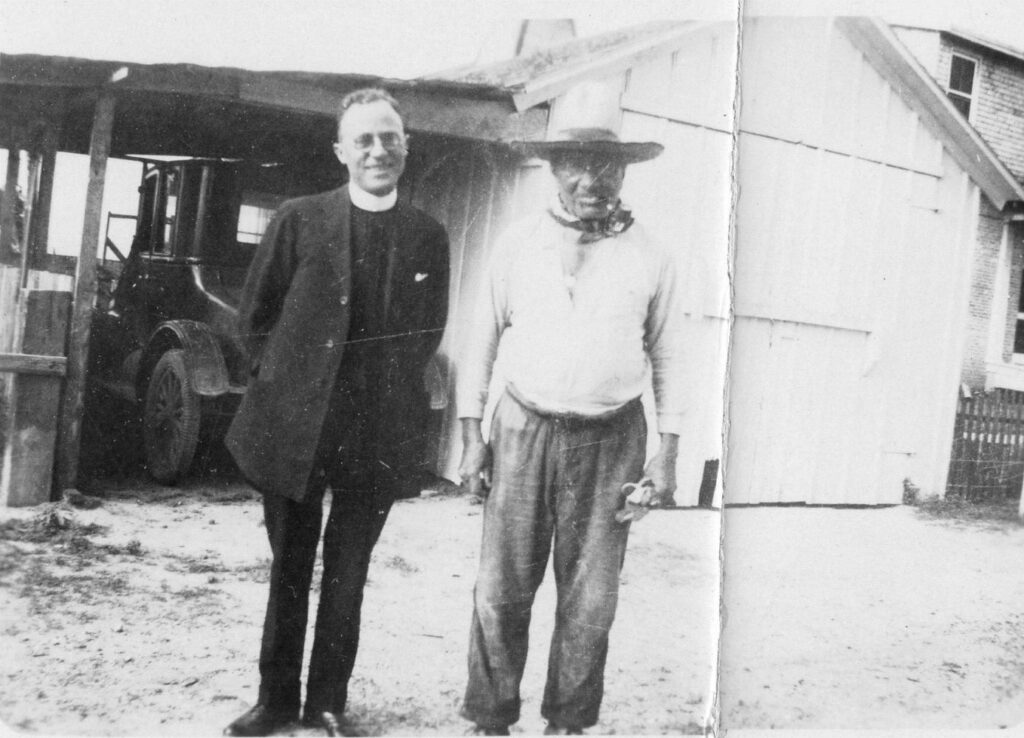“The Cavalry of Christ” with Fr. Bretault in the center. At the dedication of Our Lady of Guadalupe in Mission Texas, January 29, 1911
Father Bretault, better known as “Padre Juanito de Ia Costa” was born in La Tournerie du Fief-Sauvin, France. He attended the major seminary at Angers after schooling in his village and the college at Beaupréau. He made his oblation in 1870 at the novitiate in Nancy, France. He also studied at Notre-Dame-de-l’Osier and Autun. After his ordination on May 25, 1872, Father came to Texas and took over the coastal mission of the famed “Lost Missionary’ Father Keralum until 1896, and again from 1904 to 1909. It was a territory that was once a 100 miles long along the South Texas coast.
At first, it was feared that Father’s poor health would not permit him to undertake the strenuous life of a Texas missionary, but for many years he rode horseback working in the hardest missions in South Texas and died in his 90th year. He was among those early missionaries that came to be known as the “Cavalry of Christ”.
For years he managed the immense Oblate ranch at La Lomita which was later sold and on part of which the present town of Mission, Texas is located.
He spent his last years at St. Peter’s Novitiate in Mission, Texas, a great favorite of many classes of novices who profited greatly by his words and example. He died due to burns received on the grounds of the novitiate on May 31, 1934.
—————————–
Padre Juanito De La Costa acquired this title from the Mexicans because he made so many journeys along the coast, stopping at ranch after ranch until he reached La Parra near the present town of Sarita. There he had a room and was always welcomed. This ranch was about 120 miles from Brownsville. Trips such as these meant that the missionary had to exchange horses many times. Thirty or forty miles a day was about all that they could cover along the thorny trails. Father Bretault, as he related, was lost many times and once thought that the end had come. But a prayer to his guardian angel, he believed, helped him to find the trail and led him to a poor hovel where he was cared for.
He had a regular schedule which was well known to these people and he would find them waiting for him. At times, he would find himself trapped by the rising waters of the Rio Grande. These “” overflowed the high banks, spreading across the prairies and flooding the trails, forcing him to swim his horse and carry his saddle-bags on his head. (Mary Immaculate Magazine – September 1937)
Certificate in Oblate Studies
If you want to learn more about the Missionary Oblates of Mary Immaculate, their charism, and their founder, St. Eugene de Mazenod, you may be interested in the Certificate in Oblate Studies.



